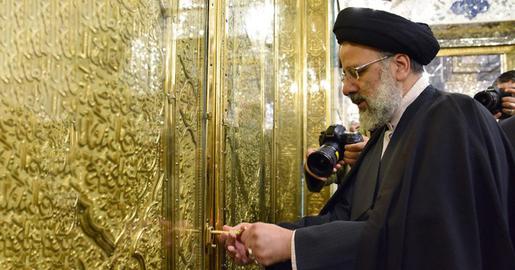An Iranian citizen journalist, who writes under a pseudonym to protect his identity, wrote the following article on the ground inside Iran.
Ever since July 14, 2015 when the nuclear agreement with Iran was announced, large Western delegations have traveled to the country to evaluate the economic conditions for foreign investment in Iran. Most of those traveling to the country have been keen to look at the Iranian market for a long time, but only recently have they been able to really assess the Iranian market and negotiate for investments without being limited by the impact of international sanctions.
The Iranian Ministry of Industry, Mines and Commerce has been in constant negotiations with foreign economic delegations, which have mainly focused on large Iranian industries such as petroleum, petrochemical, steel and automobile industries. Few investors have expressed an interest in Iran’s smaller industries.
A small or medium-size industry is defined as an industrial unit with a workforce of up to 200 workers. In dynamic economies around the world such industries are considered to be one of the driving forces behind the economy. The expansion of these industries is critical if the private sector is to play a role in the overall economy. But in Iran, these industries have not been thriving in the way that they should have been, mainly because of the state-based structure of Iran’s economy.
According to the head of Iran’s Small Industries and Industrial Parks Organization, small and medium-size industries employ 41 percent of the workforce in Iran. Between 2009 and 2013, around 14,000 units in this sector went out of business as a result of international sanctions and a shortage of liquidity and available capital. Foreign investors could ease or even solve the problem of capital, but the structure of the Iranian economy and the fact that the state owns most large industries is a barrier to foreign investment in the sector.
State-Owned Industries Steal the Show
Italian, Chinese and Japanese delegations have all visited a number of industrial parks in Iran, announcing their willingness to invest, but the influence of large state-owned industries and the probability of these industries’ success in the market are both so high that, in reality, there is very little room for small industries to compete.
Lack of Liquidity
Another problem is that Iran does not present these smaller industries in a way that make them attractive to foreign investment, or that shows the opportunities they offer. It does not demonstrate the role these businesses play in Iran’s economy. For example, Iranian handicrafts, produced and marketed by small studios and workshops, are well known around the world. The sector has great potential, but because of a lack of liquidity — making sure a business has enough cashflow and can still make a profit — this potential has not been properly realized.
“Private manufacturers cannot offer their products in the international market because they lack financial support and adequate liquidity,” said one handicraft manufacturer.
A Political Blind Spot
Another obstacle is that decision-makers ignore the sector and fail to recognize its importance. In one clear example, the Ministry of Industry recently put together a strategic plan for Iranian industries that itemizes all industrial sectors in Iran and offers strategic directive for their future — but it devoted only a few lines to small industries in the plan.
Foreign Imports
The risk of investment in this sector is increased by the fact that similar products are imported without any limitations. Automobile part manufacturers fall into the category of small industries, but it easy to see the impact for example that Chinese imports have had on the sector, representing a significant risk to potential investors. The practice of importing products that directly compete with Iranian small industries has driven many of these businesses to the brink of bankruptcy.
Recently, the Ministry of Industry banned the import of such competing products, but there is no certainty that the next administration will continue this policy.
Because of these obstacles — the power of the state-owned industries and the failure to successfully market Iranian small business — investors will remain wary of investing in these smaller industries. Some experts believe that if foreign capital is invested in large Iranian industries, smaller industries will experience a knock-on effect and be automatically drawn into the production loop in a more invigorated manner. But this can only help those small industries that produce goods for use by larger industries.
Now that the private sector in Iran — represented by Iran’s Chamber of Commerce Industries and Mines — has been given a more visible role to play in negotiations with foreign investors, it is the right time to bring out small and medium-size industries from behind the shadow of the bigger ones. They need, and deserve, the chance to be noticed.
Shahryar Bazargan, Citizen-Journalist
Related articles:
Iran’s Risky New Business Landscape
Open for Business? France Looks to Tehran






















comments